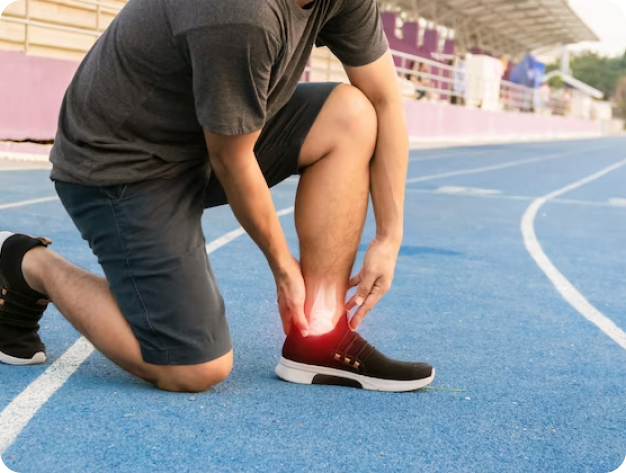Foot Pain
The Centers for Disease Control have found that plantar fasciitis accounts for an average of one million patient visits per year.

Why You Get It
Plantar fasciitis, or inflammation of the plantar fascia (the band of tissue that runs across the bottom of your foot lengthwise), is the most common diagnosis for foot pain. However, the plantar fascia is rarely the primary cause of your foot pain. With 26 bones and more than 100 muscles, tendons, and ligaments, the foot is a very complex system. And the plantar fascia is a relatively insignificant component of this system. It can just cause a lot of pain.
Muscles, tendons, and ligaments work as a team to move and stabilize the foot. If any member of the team is not pulling its weight, another member must pick up the slack. In addition to the plantar fascia, other muscles, which start just below the knee, also support the foot. These muscles travel down the lower leg and into the foot, often as far as your toes. If these muscles become weak or overused, this puts excess stress onto the plantar fascia of the foot, resulting in foot pain, heel pain or bunions. Our body often responds to excess stress in an area by laying down scar tissue. The scar tissue limits mobility of both the joints and soft tissues, causing pain.
The Kinetic Chain


Treatment
At Muscle & Joint Clinic, we focus on determining which structures are causing your foot pain. Using video gait analysis and other special tests that discover any weak links in the kinetic chain, we assess what is truly causing your poor movement patterns. Therapy then focuses on removing scar tissue, using therapies such as to release tight muscles, remobilize joints and strengthen weak muscles. What is often incompletely diagnosed as plantar fasciitis now has a thorough approach to resolve your kinetic chain problem. This resolves most cases of foot pain, allowing you to be pain-free and fully functional.
